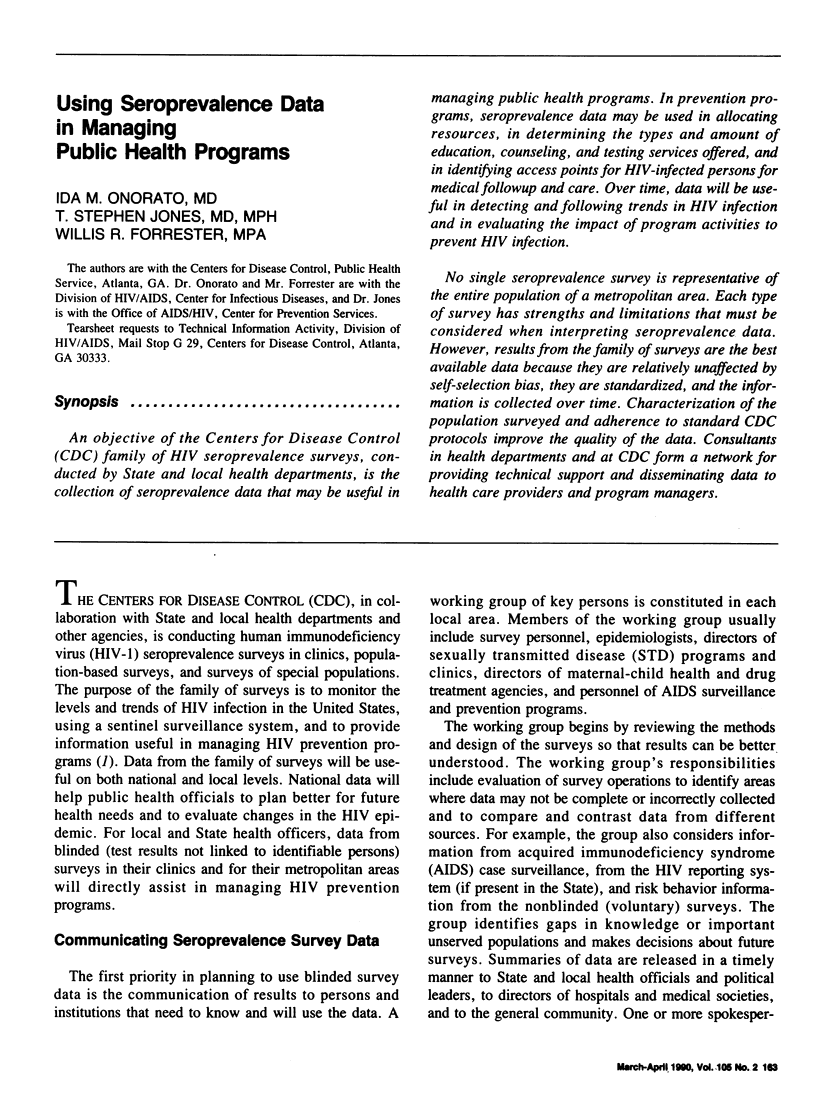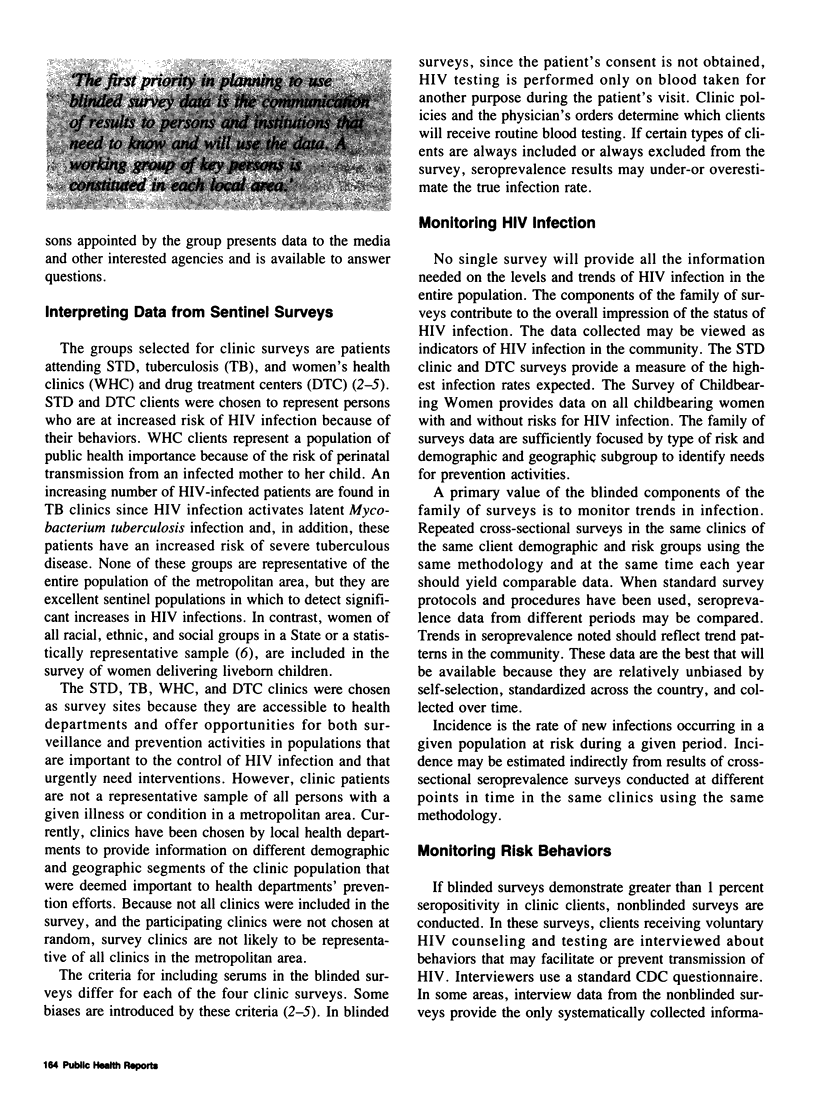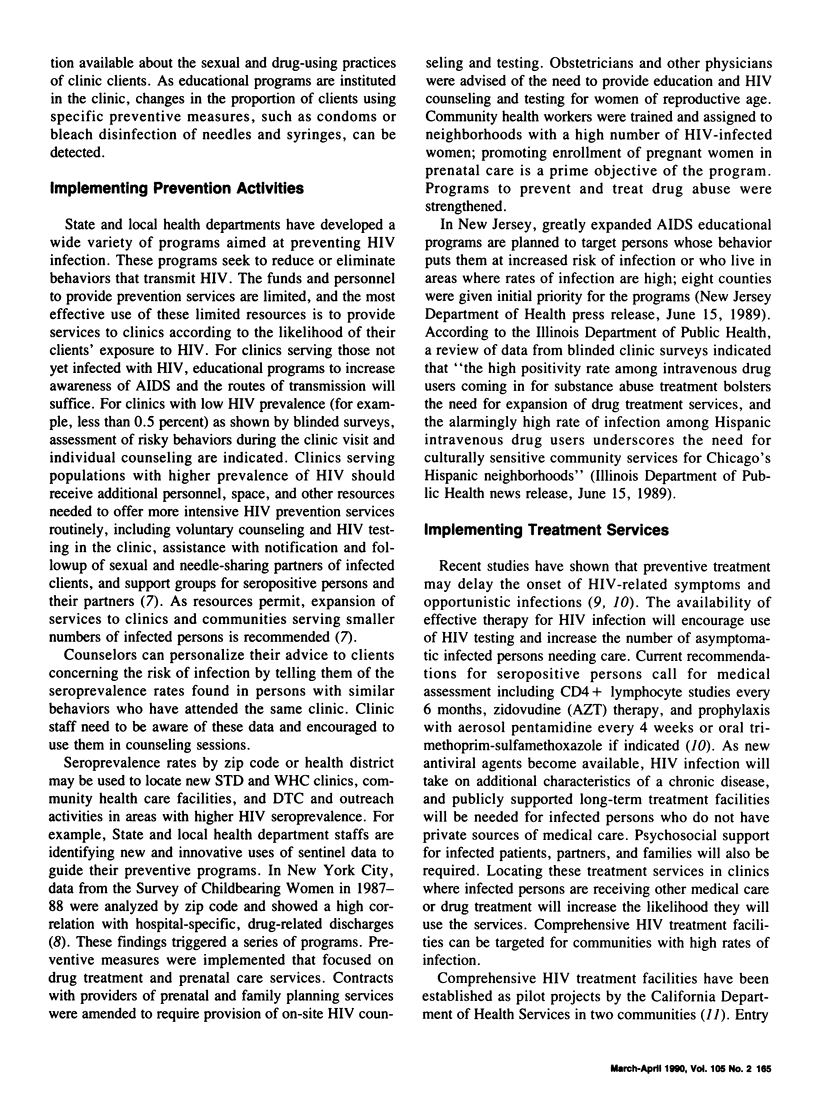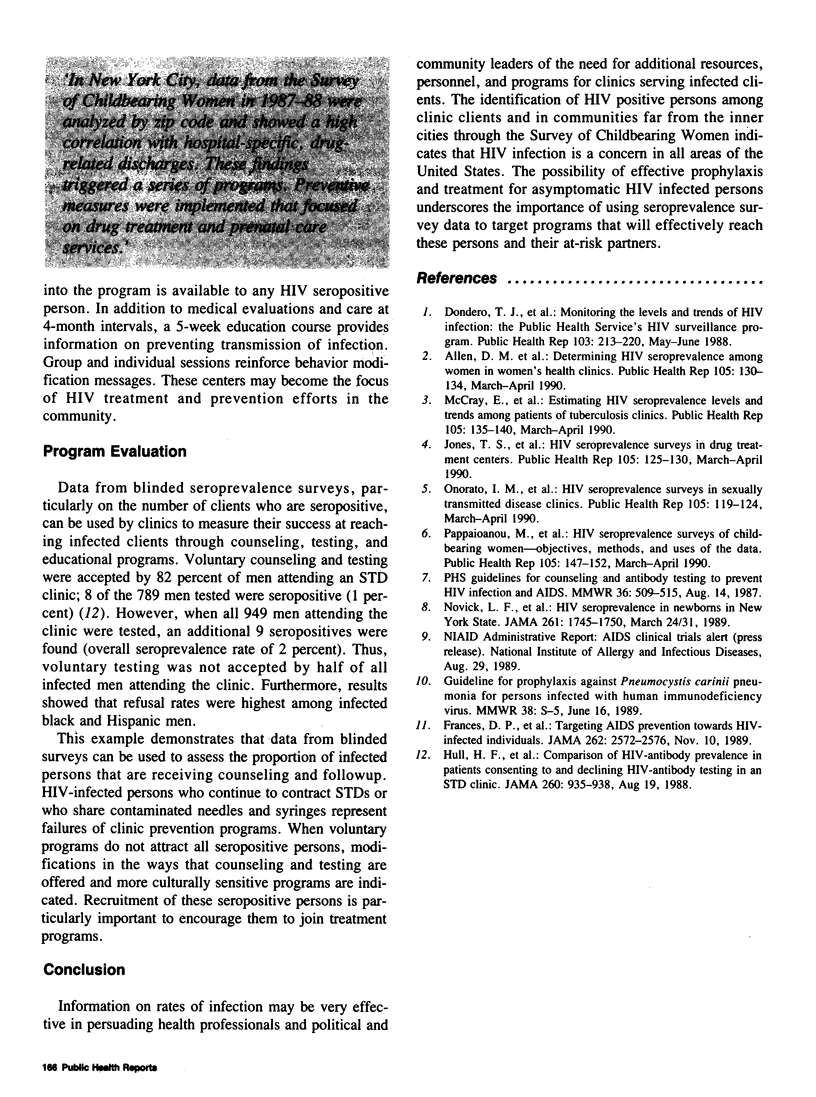Abstract
An objective of the Centers for Disease Control (CDC) family of HIV seroprevalence surveys, conducted by State and local health departments, is the collection of seroprevalence data that may be useful in managing public health programs. In prevention programs, seroprevalence data may be used in allocating resources, in determining the types and amount of education, counseling, and testing services offered, and in identifying access points for HIV-infected persons for medical followup and care. Over time, data will be useful in detecting and following trends in HIV infection and in evaluating the impact of program activities to prevent HIV infection. No single seroprevalence survey is representative of the entire population of a metropolitan area. Each type of survey has strengths and limitations that must be considered when interpreting seroprevalence data. However, results from the family of surveys are the best available data because they are relatively unaffected by self-selection bias, they are standardized, and the information is collected over time. Characterization of the population surveyed and adherence to standard CDC protocols improve the quality of the data. Consultants in health departments and at CDC form a network for providing technical support and disseminating data to health care providers and program managers.
Full text
PDF



Selected References
These references are in PubMed. This may not be the complete list of references from this article.
- Allen D. M., Lee N. C., Schulz S. L., Pappaioanou M., Dondero T. J., Jr, Onorato I. M. Determining HIV seroprevalence among women in women's health clinics. Public Health Rep. 1990 Mar-Apr;105(2):130–134. [PMC free article] [PubMed] [Google Scholar]
- Dondero T. J., Jr, Pappaioanou M., Curran J. W. Monitoring the levels and trends of HIV infection: the Public Health Service's HIV surveillance program. Public Health Rep. 1988 May-Jun;103(3):213–220. [PMC free article] [PubMed] [Google Scholar]
- Francis D. P., Anderson R. E., Gorman M. E., Fenstersheib M., Padian N. S., Kizer K. W., Conant M. A. Targeting AIDS prevention and treatment toward HIV-1-infected persons. The concept of early intervention. JAMA. 1989 Nov 10;262(18):2572–2576. [PubMed] [Google Scholar]
- Hull H. F., Bettinger C. J., Gallaher M. M., Keller N. M., Wilson J., Mertz G. J. Comparison of HIV-antibody prevalence in patients consenting to and declining HIV-antibody testing in an STD clinic. JAMA. 1988 Aug 19;260(7):935–938. [PubMed] [Google Scholar]
- Jones T. S., Allen D. M., Onorato I. M., Petersen L. R., Dondero T. J., Jr, Pappaioanou M. HIV seroprevalence surveys in drug treatment centers. Public Health Rep. 1990 Mar-Apr;105(2):125–130. [PMC free article] [PubMed] [Google Scholar]
- McCray E., Onorato I. M., Miller B. I., Dondero T. J., Jr, Bloch A. B. Estimating HIV levels and trends among patients of tuberculosis clinics. Public Health Rep. 1990 Mar-Apr;105(2):135–140. [PMC free article] [PubMed] [Google Scholar]
- Novick L. F., Berns D., Stricof R., Stevens R., Pass K., Wethers J. HIV seroprevalence in newborns in New York State. JAMA. 1989 Mar 24;261(12):1745–1750. [PubMed] [Google Scholar]
- Onorato I. M., McCray E., Pappaioanou M., Johnson R., Aral S., Hardy A. M., Dondero T. J., Jr HIV seroprevalence surveys in sexually transmitted disease clinics. Public Health Rep. 1990 Mar-Apr;105(2):119–124. [PMC free article] [PubMed] [Google Scholar]
- Pappaioanou M., George J. R., Hannon W. H., Gwinn M., Dondero T. J., Jr, Grady G. F., Hoff R., Willoughby A. D., Wright A., Novello A. C. HIV seroprevalence surveys of childbearing women--objectives, methods, and uses of the data. Public Health Rep. 1990 Mar-Apr;105(2):147–152. [PMC free article] [PubMed] [Google Scholar]


